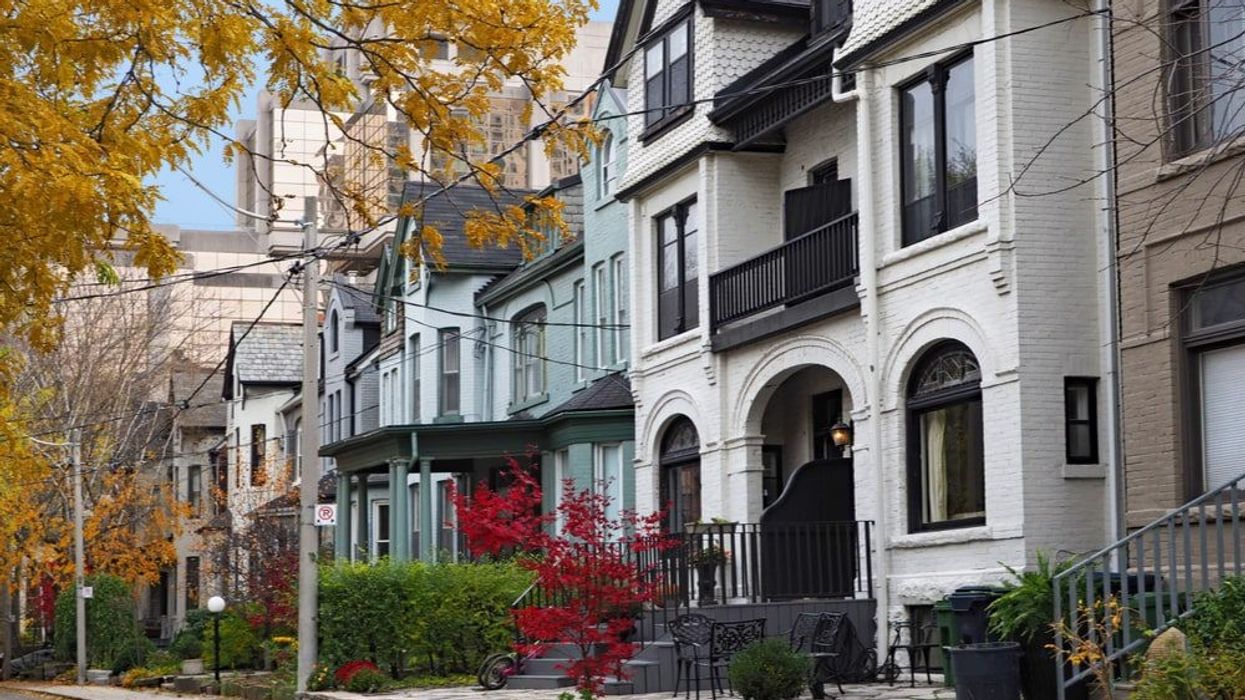Real estate markets across Canada have seen renewed fervour in recent weeks as buyers return from the sidelines, fuelled by a year of pent-up demand.
While they're eager to transact, new supply sits at a 20-year low. According to the most recent data from the Canadian Real Estate Association (CREA), the national sales-to-new listings ratio (SNLR) hit 63.5% in March -- the tightest market in a year -- as the number of newly listed homes fell and sales edged up.
An SNLR above 60% indicates a seller's market, a ratio below 40% points to a buyer's market, and anything in between suggests a balanced market.
Of Canada's major real estate markets, there are currently no cities or regions where conditions favour buyers.
Based on the latest data from each area, Toronto, Edmonton, Saskatchewan, the Niagara Region, and Nova Scotia offer balanced markets. Meanwhile, sellers in Montreal, the Fraser Valley, Vancouver, Ottawa, Hamilton-Burlington, Saint John, and Calgary already have the upper hand.
Calgary, with a ratio of 86%, is the deepest in seller's territory. Although the city has historically had prime buying conditions, Justin Warthe, an agent with RE/MAX House of Real Estate, told STOREYS the reason for the city's shift stems from a "diversification in the economy," with growing tech and film industries luring talent away from other Canadian cities.
Migration from other parts of Alberta and Canada (Calgary's population grew 3.08% annually in 2022) is driving demand for detached homes and townhouses, while investors have set their sights on the condo market, Warthe said.
According to the Calgary Real Estate Board, sales declined 20.9% year over year in April, while new listings dropped 31.7% annually. The persistent sellers' market drove the average home price up to $550,800, a new monthly record-high, while inventory levels dipped 33.6% year over year.
There has been a significant increase in bidding wars over the last eighteen months, Wharthe said, with properties seeing eight to 10 offers and selling $100K to $200K over asking. Two years ago, homes would see "a bid or two."
"There's a lot of positive sentiment happening in the market right now," Wharthe said. "Calgary is definitely the next Canadian market to watch and to invest in. If you could have purchased in Ontario or British Columbia 10 years ago, you would have."
On the other side of the country, similar market conditions can be seen in Nova Scotia.
Data from the Nova Scotia Association of Realtors shows new listings declined 20.6% annually in March to 1,273, the lowest number for the month in over 15 years, while sales fell 38.9% year over year. In Halifax-Dartmouth, Atlantic Canada's largest market, sales declined 41.3% annually in March.
"Halifax hasn't seen a buyers' market in three years," Pam Cherington, owner of Red Door Realty told STOREYS. Between Q1 2020 and Q1 2023, Nova Scotia's population grew by 6.1%, surpassing 1M people in Q1 2022.
"There are so few properties on the market. We still have pent up demand from buyers, but people aren't listing because there’s nothing for them to buy. Unless they’re moving out of province or to another market, there’s nowhere for these sellers to go," Cherington said. "It’s difficult. It’s like a dog chasing its tail."
While it's not quite the "frenzy" of 2021 and 2022, properties are still seeing multiple offers due to the substantial lack of supply, Cherington said. Nova Scotia ended March with 3.6 months of inventory, less than half of the 10-year average for the month.
Cherington noted that any home that has been "properly fixed up" will sell above the listed price. In Halifax, the average home price declined 9.9% year over year in March but, at $542,198, it was only 3.8% below the April 2022 peak.
Although the City of Toronto is currently in balanced territory with an SNLR of 47.1%, a similar lack of listings is driving up the competition.
According to the Toronto Regional Real Estate Board, conditions continued to tighten in April, with new listings falling 38.3% year over year. Sales declined 5.2% annually, but were up 9.2% on a monthly basis. High demand in the face of dwindling supply pushed the average selling price to $1,153,269, a 4% increase from March.
Marco Pedri, a broker with Shoreline Realty, told STOREYS that buyers have "come to terms" with higher interest rates, and are getting off the sidelines. While prices remain below the peak of 2022, albeit by less than 10%, he's seen an uptick in multiple offer scenarios.
"We are definitely seeing the market pick up," Pedri said. "On top of the normal spring market, what's really driving the change is interest rates plateauing, and rumours that they'll be going down in the fall. Buyers are choosing to 'date the rate and marry the house,' leading to a lot of competition."
While Pedri doesn't expect the Toronto market to experience the same flurry of activity it did a year ago, the lack of supply will keep competition fierce, and prices high, throughout the spring.
With said lack of supply tightening markets from coast to coast, it's evident that more homes are needed. According to a report from the Canada Mortgage and Housing Corporation (CMHC), 3.5M new homes need to be built by 2030 in order to achieve housing affordability for all Canadians.
"There must be a drastic transformation of the housing sector," Aled ab Iorwerth, Deputy Chief Economist at the CMHC said. "Including government policies and processes, and an 'all-hands-on-deck' approach to increasing the supply of housing to meet demand."





















